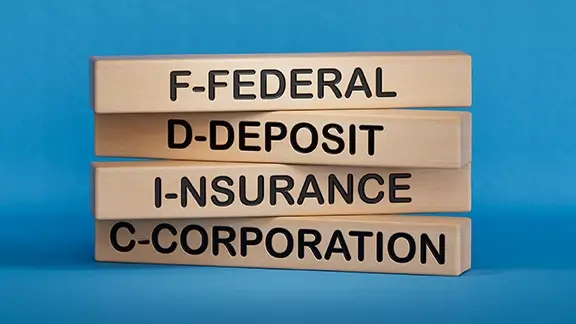If you are new to the United States, one of the most important financial questions you may have is: how much money is protected in a bank account? For immigrants who are building their financial future, knowing whether your money is safe in an American bank is critical. The good news is that the U.S. has strong systems in place to protect depositors through the Federal Deposit Insurance Corporation (FDIC).
In this article, we’ll explain how FDIC deposit insurance works, how much is covered, and what types of deposit accounts are insured. We’ll also share tips for managing multiple accounts and ownership categories so you can keep your savings safe.
What Is the FDIC?
The Federal Deposit Insurance Corporation (FDIC) is an independent agency of the U.S. federal government. It was created during the Great Depression to protect depositors from losing their money if a bank fails. Today, the FDIC continues to insure deposit accounts in FDIC insured banks across the country.
When you deposit money into checking accounts, savings accounts, money market deposit accounts, or certificates of deposit (CDs), the FDIC guarantees protection up to a certain limit.
For a deeper look at different U.S. bank accounts check out our guide on The 10 Different Types of Bank Accounts in the U.S.
FDIC Insurance Coverage Limits
So, how much money is protected in a bank account? The FDIC insurance limit is $250,000 per depositor, per ownership category, per FDIC insured bank. This means:
Single accounts (owned by one person) are insured up to $250,000.
Joint accounts (owned by two or more people) are insured up to $250,000 per co-owner.
Certain retirement accounts (like IRAs) are also covered up to $250,000.
This insurance coverage includes both the money you deposit and any accrued interest up to the date a bank fails. If your bank closes, the FDIC steps in quickly to make sure depositors get their insured deposits back.
Learn more about deposit insurance coverage at the official FDIC website.
What Accounts Are Covered?
The FDIC provides protection for most common types of deposit accounts. These include:
Checking accounts
Savings accounts
Money market deposit accounts
Certificates of deposit (CDs)
Cashier’s checks and money orders issued by a bank
These are all considered insured deposits. The FDIC does not cover investments such as stocks, bonds, mutual funds, or treasury bills.
If you want to explore how to open accounts safely, read our blog on How to Open a Bank Account as an Immigrant in the U.S.
What Accounts Are Not Covered?
FDIC deposit insurance does not cover everything. Here are some examples of what is not insured:
Investments in stocks, bonds, and mutual funds
Life insurance policies
Annuities
Municipal securities
Safe deposit box contents
Investments in cryptocurrencies
Knowing the difference between insured deposits and non-insured assets helps you avoid risk. If you want guaranteed protection, stick with FDIC insured accounts.
FDIC Insurance Coverage by Ownership Categories
The FDIC separates accounts by ownership categories. This matters because you can increase your protection by using different account ownership categories at the same FDIC insured bank.
Some examples include:
Single accounts: Owned by one person only, insured up to $250,000.
Joint accounts: Each co-owner gets up to $250,000 per depositor.
Certain retirement accounts: Covered separately up to $250,000.
Revocable trust accounts: These can provide even more coverage depending on the number of beneficiaries.
This means that if you have multiple accounts in the same ownership category at the same bank, they are combined for FDIC insurance coverage. But if you spread funds across different ownership categories, you can qualify for more than the $250,000 per depositor limit.
What Happens If You Have Multiple Accounts at One Bank
Let’s say you have the following at one bank:
$200,000 in a checking account (single ownership)
$150,000 in a savings account (single ownership)
Both accounts fall under the same ownership category (single accounts). Together, they total $350,000. Since the FDIC insurance limit is $250,000 per depositor per ownership category, only $250,000 is protected. The remaining $100,000 is uninsured.
Now imagine you also have a joint account at the same bank with your spouse containing $400,000. Because it’s in a different ownership category, each owner gets $250,000 in coverage. That means the entire $400,000 is insured.
What If You Have Accounts at Multiple Banks
What if you keep money in multiple banks? FDIC coverage applies separately to each FDIC insured bank. If you have $250,000 at Bank A and $250,000 at Bank B, both amounts are fully covered.
Some people use services like IntraFi Network Deposits, which spread deposits across multiple banks automatically. This way, large balances can stay fully insured.
FDIC vs. Credit Unions
What if your financial institution is not a bank but a credit union? Good news: credit unions are also insured, but by a different agency—the National Credit Union Administration (NCUA). Coverage limits are the same: deposits are insured up to $250,000 per depositor, per ownership category.
What Happens If a Bank Fails?
A bank failure can sound scary, but depositors with insured accounts don’t need to worry. If a bank fails, the FDIC usually steps in within a few days. You will either:
Have your deposits transferred to another FDIC insured bank, or
Receive a check for your insured balance, including accrued interest.
Thanks to this system, no depositor has lost insured funds since the FDIC was created in 1933.
How Much Money Is Protected in a Bank Account: Key Takeaways
How much money is protected in a bank account? Up to $250,000 per depositor, per ownership category, per FDIC insured bank.
Use different ownership categories (single, joint, retirement) to increase coverage at the same bank.
Consider keeping deposits at multiple banks for higher protection.
Credit unions have the same level of protection through the NCUA.
Stick with insured deposit accounts like checking, savings, CDs, and money market deposit accounts.
For immigrants in the U.S., understanding FDIC insurance coverage helps protect your savings. Whether you are putting money aside for education, retirement, or family needs, you can feel confident that your insured deposits are safe, even if a bank fails. This knowledge gives you peace of mind as you work toward building your financial future in your new home.


